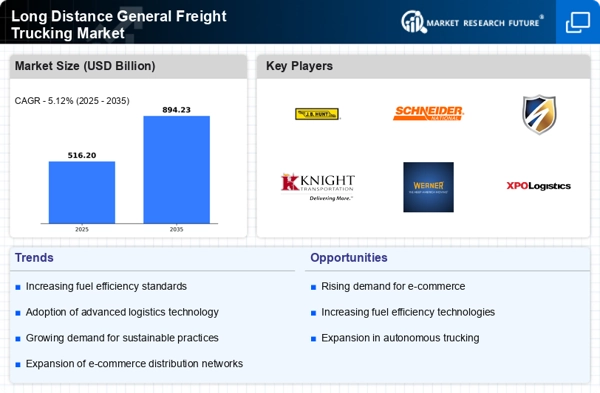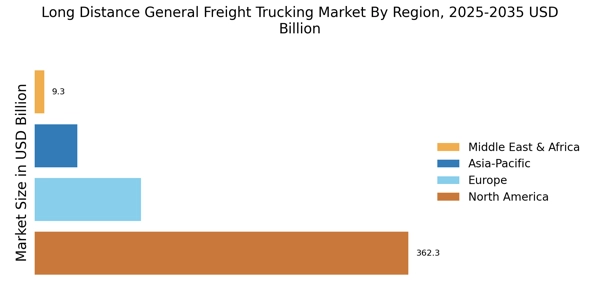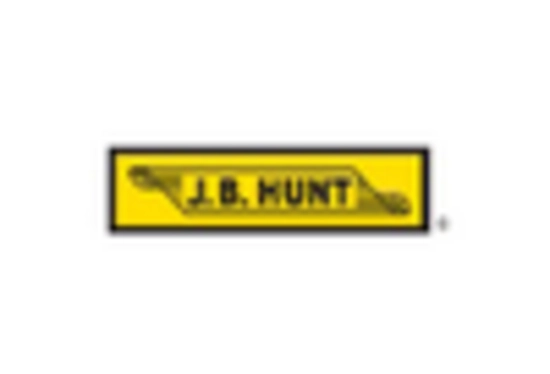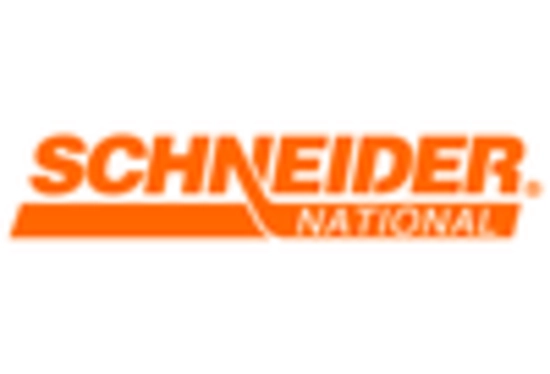E-commerce Growth
The rise of e-commerce has profoundly influenced the Long Distance General Freight Trucking Market. As online shopping continues to expand, the demand for efficient freight transportation increases. In 2025, e-commerce sales are projected to reach approximately 6 trillion USD, necessitating robust logistics solutions. This surge in online retailing drives the need for timely deliveries, thereby enhancing the role of long-distance trucking. Companies are increasingly relying on trucking services to meet consumer expectations for fast shipping. Consequently, this trend is likely to bolster the Long Distance General Freight Trucking Market, as logistics providers adapt to the evolving landscape of consumer behavior.
Rising Fuel Costs
Fuel prices are a critical factor influencing the Long Distance General Freight Trucking Market. Fluctuations in oil prices can significantly affect operational costs for trucking companies. In 2025, fuel costs are projected to remain volatile, prompting companies to seek more fuel-efficient vehicles and alternative energy sources. The pressure to manage fuel expenses may lead to innovations in logistics and route optimization. As companies strive to maintain profitability amidst rising fuel costs, the Long Distance General Freight Trucking Market may witness a shift towards more sustainable practices and technologies.
Regulatory Changes
Regulatory frameworks significantly impact the Long Distance General Freight Trucking Market. Recent changes in transportation regulations, including emissions standards and safety requirements, compel trucking companies to adapt their operations. Compliance with these regulations often necessitates investment in newer, more efficient vehicles and technologies. For instance, the implementation of stricter emissions standards may lead to a shift towards electric or hybrid trucks. This transition could reshape the competitive landscape of the Long Distance General Freight Trucking Market, as companies that proactively embrace regulatory changes may gain a competitive edge.
Infrastructure Development
Investment in infrastructure plays a crucial role in shaping the Long Distance General Freight Trucking Market. Governments are prioritizing the enhancement of transportation networks, including highways and intermodal facilities. In recent years, substantial funding has been allocated to improve road conditions and expand freight corridors. This development facilitates smoother and more efficient transportation of goods over long distances. Improved infrastructure not only reduces transit times but also lowers operational costs for trucking companies. As a result, the Long Distance General Freight Trucking Market stands to benefit from these advancements, which are expected to enhance overall supply chain efficiency.
Technological Advancements
Technological advancements are reshaping the Long Distance General Freight Trucking Market. Innovations such as telematics, route optimization software, and autonomous vehicles are enhancing operational efficiency. In 2025, the adoption of these technologies is expected to accelerate, driven by the need for cost reduction and improved service delivery. Companies that leverage technology can optimize their fleets, reduce downtime, and enhance customer satisfaction. This trend indicates a potential transformation in the Long Distance General Freight Trucking Market, as technology becomes a key differentiator in a competitive landscape.


















Leave a Comment